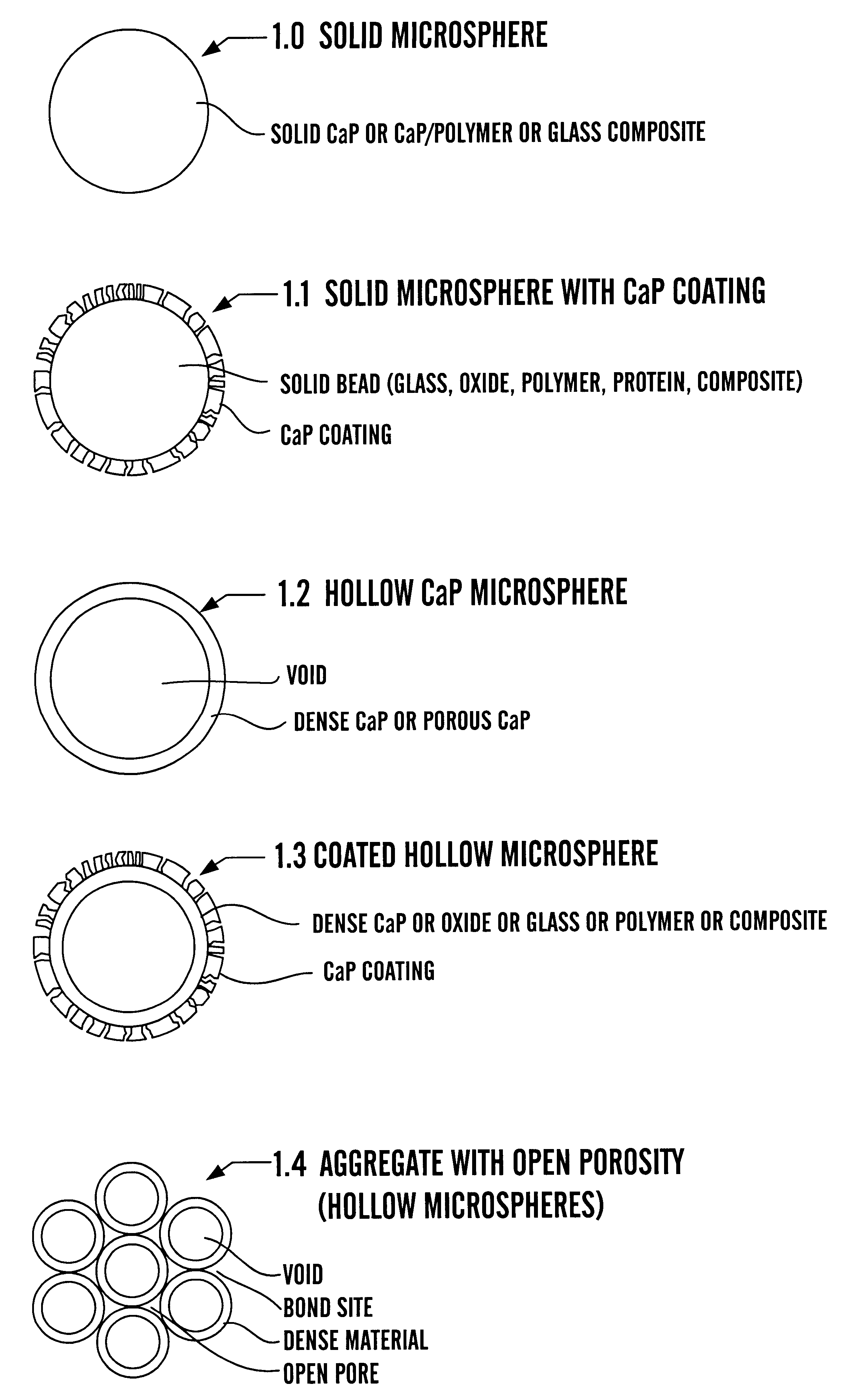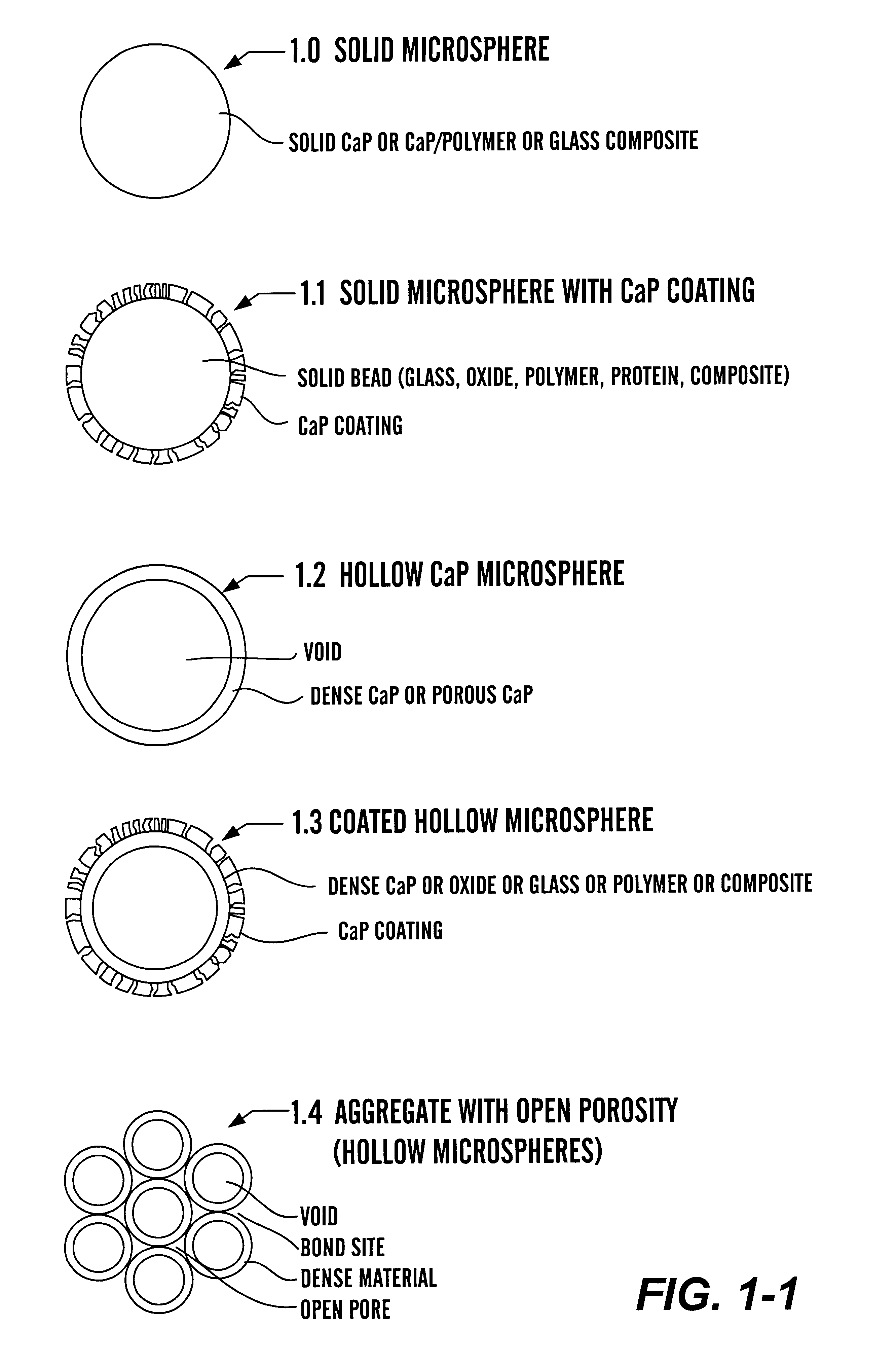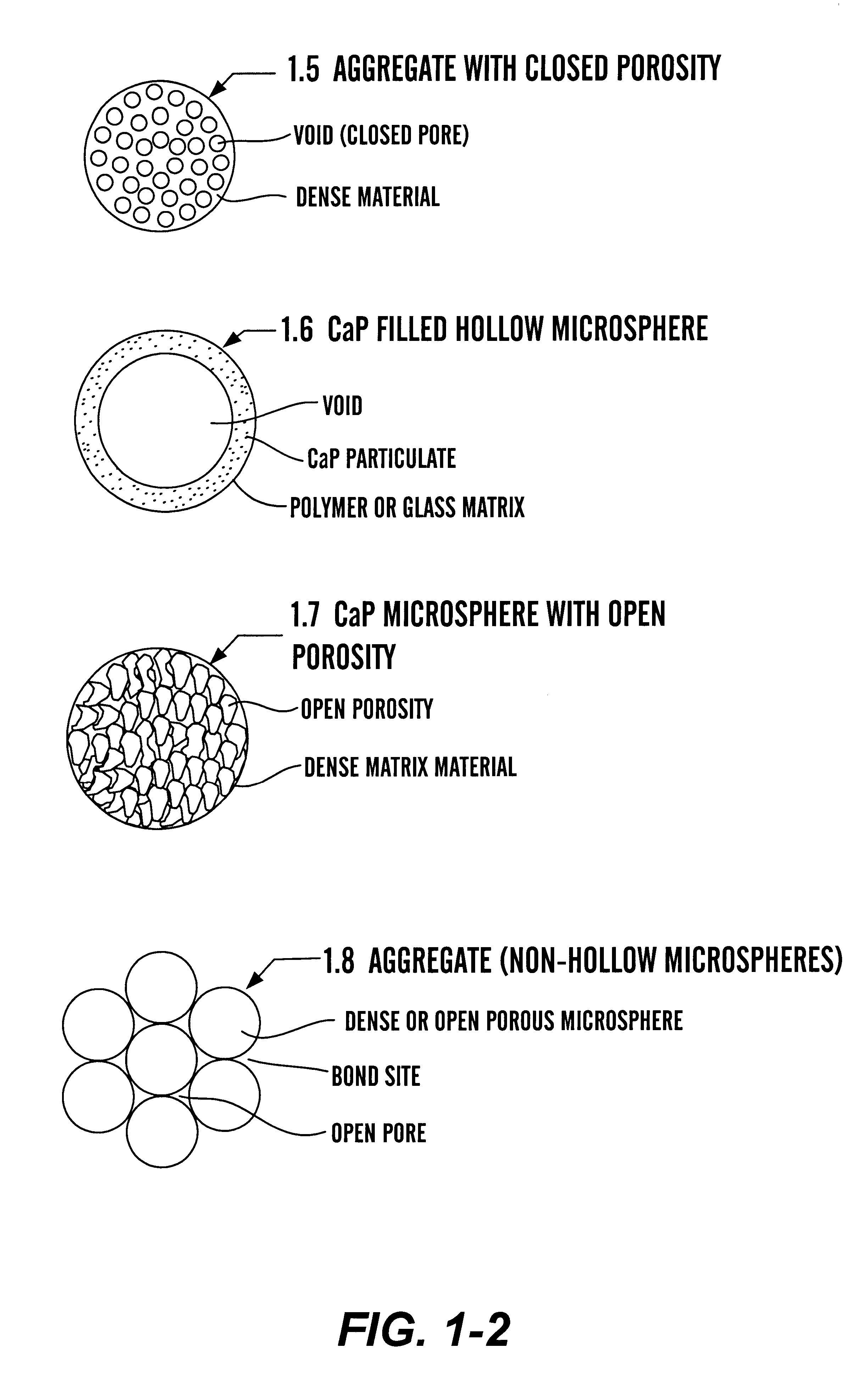Calcium phosphate microcarriers and microspheres
a calcium phosphate microcarrier and microsphere technology, applied in the field of hollow microbeads, can solve the problems of poor oxygen transfer characteristics of existing microcarrier systems, high cost of microcarriers, and only available in non-suspendable locations, so as to increase the resorbability of microspheres, compress the strength, and the degree of resorbability
- Summary
- Abstract
- Description
- Claims
- Application Information
AI Technical Summary
Benefits of technology
Problems solved by technology
Method used
Image
Examples
example 1a
Alternative Method for Producing CaP Hollow Microspheres with Diameters in the Size Range From 0.2 mm to 6.0 mm by Coating Wax or Other Organic Microbeads with CaP Compounds
Hollow ceramic microspheres may also be fabricated by coating ceramic powders or slurries onto microbeads of wax or other organic materials and subsequently removing the wax microbead through thermal decomposition and / or solvent extraction. The resulting hollow ceramic microspheres are sintered to the desired density.
More specifically, a microbead of polyethylene wax or other wax or organic material is formed by spraying from a melt and re-solidifiing at a lower temperature. Size of the microbeads is determined by the size of the spraying orifice and the pressure under which the organic material or wax is sprayed. Wax or other organic microbeads also can be produced, for example, by compaction of wax powders by rolling in heated ball mills or pan pelletizers or by rolling the powders and gradually adding a solven...
example 2
Method for Fabricating Hollow CaP Microcarriers with Diameters Less than 500 Micrometers (Modified Sol Gel Type System)
Using the method set forth by Hayek and Newesley in Jacob Kleinberg, editor, Inorganic Synthesis, McGraw-Hill, New York, Vol. 7, pp. 63-65, 1963 for the synthesis of hydroxylapatite, basic solutions of calcium nitrate and ammonium phosphate are prepared and adjusted to a pH above 9 to promote the precipitation of hydroxylapatite upon addition of the ammonium phosphate to the calcium nitrate. Upon completion of the reaction , the solids are allowed to partially settle and are then decanted from the reacting solution. The decanting process is then repeated three times with distilled H.sub.2 O. Care must be taken not to wash away the hydroxylapatite precipitate. Based upon initial reaction calculations, the precipitate is diluted to a solid concentration of approximately 15-20%. A dispersant such as Pluronic (BASF, Parsippany, NJ) may be titrated into this precipitate ...
example 3
Porous CaP Coatings for Bonding to the Substrate Surfaces of Hollow or Solid Beads or Microbead Materials Comprised of CaP, Glass, Other Oxide Ceramics, Polymers, Proteinaceous Materials or Composite Materials
The surface of the hollow microsphere can also be altered by applying a porous layer of suitable particulate calcium phosphate ceramic which (1) will increase the chemical activity of the material due to the higher surface area of the material and (2) through larger interconnecting pore sizes, can also provide porous channels to accommodate cell and tissue in-growth.
The porous calcium phosphate coating composition is comprised of a commercial source of tricalcium phosphate powder (FMC, Lawrence, Kans.) which is either used as-received, or preferably, is calcined in the temperature range of 1100.degree. C. to 1250.degree. C. to slightly coarsen the material for making porous coatings. The tribasic calcium phosphate ceramic powder is readily processed in an aqueous medium or othe...
PUM
| Property | Measurement | Unit |
|---|---|---|
| density | aaaaa | aaaaa |
| density | aaaaa | aaaaa |
| densities | aaaaa | aaaaa |
Abstract
Description
Claims
Application Information
 Login to View More
Login to View More - R&D
- Intellectual Property
- Life Sciences
- Materials
- Tech Scout
- Unparalleled Data Quality
- Higher Quality Content
- 60% Fewer Hallucinations
Browse by: Latest US Patents, China's latest patents, Technical Efficacy Thesaurus, Application Domain, Technology Topic, Popular Technical Reports.
© 2025 PatSnap. All rights reserved.Legal|Privacy policy|Modern Slavery Act Transparency Statement|Sitemap|About US| Contact US: help@patsnap.com



